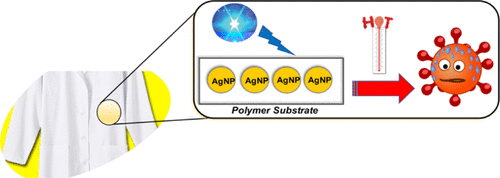



Fig. 4. Image depicting crystalline periodicity of niobium oxide perovskites.

The development of alternative energy sources and, in particular, chemical pathways that will contribute to diverting the energy crisis are highly desired in modern scientific procedures. Given the finite nature of global fossil fuel resources and volatile crude oil prices, current interest has been placed on the development of materials that can effectively reducing the overall carbon footprint of catalytic materials, while providing similar, if not better, overall results as compared to traditionally employed methods. Implementing heterogeneous catalysis in the development of sustainable chemistry procedures offers the added benefit of both catalyst recovery and potential recyclability in subsequent reactions, thereby reducing the generation of chemical waste. Semiconductor photocatalysis has rapidly emerged as a possible solution that satisfies many of these highly sought after chemical properties.
Functionalization of semiconductors with metal nanostructures, such as gold (AuNP), silver (AgNP), or palladium (PdNP) nanoparticles, provides an opportunity to extend composite response into the visible region of the electromagnetic spectrum and possible applications in the sector of renewable energy resources. Within the past decade, considerable attention has been placed on nanoparticle light-driven reactions due to the ability of both Au- and AgNP to efficiently absorb visible light as a result of surface plasmon resonance. This electronic phenomenon, which is essentially associated with rapid oscillation of the NP surface electrons results in absorption of AuNP and AgNP at ~530 nm and 420 nm, respectively. Plasmon, visible light, excitation has been suggested to enhance the photoactive properties of AuNP, largely exploited in the study of AuNP/TiO2 photocatalysts. In addition, nanoparticle-doping has been suggested to improve photoconversion efficacy of semiconductor materials by extending the photoresponse of the catalyst into the visible, improving charge separation and by improving the electron storage capacity the material. The implementation of perovskites, in particular, niobium and tantalum oxides, are interesting due to (a) underdeveloped photocatalytic activities and (b) improved ease of separation from reaction mixtures (compared to TiO2) attributed to their unique crystallinity and size of these solid state materials.
We are currently investigating a variety of photocatalytically-induced organic transformations using nanoparticle-doped perovskite structures using both UV and visible light sources. We are primarily focused on using more economical means of excitation, with a large focus on the exploitation of LED photoreactors in our experimental procedures. We are actively examining the effect of a variety of experimental variables in these reactions, including substituents, nanoparticle dopants and perovskite structure. As of late, we have become increasing intrigued by the guest-host interactions of layered perovskite materials and the positive influence these materials may have on the overall photocatalytic efficiency, as well as application of our materials towards environmental remediation and pathogenic detection and mitigation.
Students in our lab will are involved in all aspects of research, from conception, to methods development, analysis and finally scientific writing in manuscript preparation/conference presentations - affording a truly experiencal learning environment.
Our current team is actively researching in several different areas of heterogeneous photocatalysis
-
Photocatalytic and photoelectrocatalytic alternative energy design (in collaboration with Dr. Erwan Bertin, Dept. of Chemistry, StFX; Dr. M. Marin and Dr. F. Bosca, Instituto de Tecnología Química, Spain)
-
Novel biochar nanocomposites for environmental remediation (in collaboration with Dr. Stephanie MacQuarrie and Dr. Marzi Baneshi, Cape Breton University and Dr. Ali Shafiee, Trent University)
-
Nanoparticle-functionalized perovskites as catalysts in light-induced organic transformation
-
Nanoparticle-functionalized perovskites as catalysts in biomass conversion
-
Semiconductor composites for refinery waste conversion
-
Applications of catalytically active nanomaterials (in collaboration with Dr. Erwan Bertin, Dept. of Chemistry, StFX)
-
Supported Ru complex/AuNP hybrids (in collaboration with Dr. Brian J. MacLean, Dept. of Chemistry, StFX)
-
Photocatalytic applications of novel semiconductor/dye composites (in collaboration with Dr. Manuel Aquino and Dr. Brian J. MacLean, Dept. of Chemistry, StFX)
-
Biomedical applications of noble metal nanoparticles and biomolecule functionalized metal oxides (in collaboration with Dr. M.J. Silvero, Universidad Nacional de Cordoba, Cordoba, Argentina; University of Ottawa).
-
Design and catalytic applications of long lived phosphor/metal oxide materials (in collaboration with Dr. Matthew Lukeman, Dept. of Chemistry, Acadia University)
-
Natural material photoconversion to value added chemicals (in collaboration with Dr. José Carlos Netto Ferreira, INMETRO and Professor Emeritus UFRRJ, Rio de Janeiro, Brazil)
-
Light-induced water remediation (in collaboration with in collaboration with Dr. José Carlos Netto Ferreira, INMETRO and Professor Emeritus UFRRJ, Rio de Janeiro, Brazil)
-
Imaging of nanoparticle/niobium and tantalum oxide perovskite hybrids (in collaboration with Dr. J. Craig Bennett, Dept. of Physics, Acadia University)
-
Design of novel char/semiconductor composites for applications in heterogeneous catalysis (in collaboration with Dr. Stephanie MacQuarrie, Dept. of Chemistry, CBU)
-
Computational modelling of photocatalytic pathways (in collaboration with Dr. Galina Orlova, Dept. of Chemistry, StFX)
-
Flow cell photocatalysis (Dr. M. Marin, Universitat de Valencia, Spain)
-
Green materials for sustainable applications (Dr. Erwan Bertin, Dept. of Chemistry, StFX)




